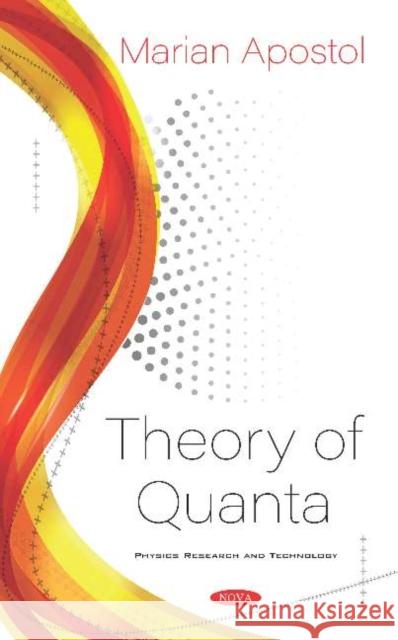Theory of Quanta » książka
Theory of Quanta
ISBN-13: 9781536166514
Quantum Mechanics is a fundamental scientific discipline. At the same time, it is viewed as being very difficult. This book attempts to present the Theory of Quanta as a scientific discipline which has emerged naturally from experiment, making use of general concepts of the Classical Mechanics and enlarging their nature and applicability. According to the historical development, the first natural way of introducing the quantum-mechanical concepts is the matricial theory, followed by the very useful approach of the undulatory theory. The core of the Theory of Quanta is the quasi-classical theory, described at large in the book. The book does not circumvent the so-called philosophical problems of the Quantum Mechanics. 1) Ch. 1, Beginnings, includes all the experimental, preliminary indications of the necessity of a new theory. The usual textbooks say little about this aspect. In particular, Double Slit and Particle and Waves sections are completely new. 2) Ch. 2, Classical Mechanics, is seldom included in the usual textbooks. In addition, it is formulated here on the basis of the Hamilton-Jacobi equation, though rarely used, it is the direct way of passing from the Classical Mechanics to the Theory of Quanta. The Lenz vector in the central field is emphasized, the only way to deduce the hydrogen atom by using the Matricial Theory, a fundamental result. 3) Ch. 3, Quantum Mechanics, is the exposition of the matricial method. This is the core of the Theory of Quanta, which exhibits the basic ingredients. The Matricial theory is not included today in textbooks, which prefer the Wave Mechanics (Schrodinger equation). It is shown here the direct way to Schrodinger equation from the Matricial Theory. This chapter is written from the little-known book by Born and Jordan, Matricial Mechanics (cited there). 4) Chs. 4 to 8 are standard, technical subjects, with many novelties: Coulomb degeneracy, adiabatic hypothesis, second quantization and many-body theories (the latter is never included in textbooks). 5) Ch. 9, Quasi-Classical Quantum Mechanics, is completely new. In particular, the Tunneling, the Chemical Reactivity, Adiabatic Transitions, Reflexion above Barrier (with many applications, to ionization, for instance) are described in detail. Also, in this chapter the "philosophical" problems of the Theory of Quanta are discussed. The Quasi-Classical Mechanics is the most interesting subject in the Theory of Quanta. 6) Ch. 10, Scattering, includes a completely new formulation. Usually, the scattering theory is presented in a very fastidious way. There is a much simpler way, leading directly to results, which is present in this chapter. The clue to the scattering theory is the solution of the Helmholtz equation, usually overlooked. 7) Finally, Ch. 11 includes the much discussed problem of Measurement. The most advanced result in this direction belongs to Pauli (in his book on Quantum Mechanics). The result is still unsatisfactory. A more direct description of the measurement is given here, based on the very quantum-mechanical principles. The results are perfectly convincing, and, of course, new. 8) It is indeed hard to believe that something new can be said about the Theory of Quanta. A great impediment in understanding the Quantum Mechanics is because there are too many books published on the subject. The subject was distorted in all imaginable ways, every author trying to be original. I hope that I have succeeded to be as close as possible to the original meaning of the subject, without being too original.











